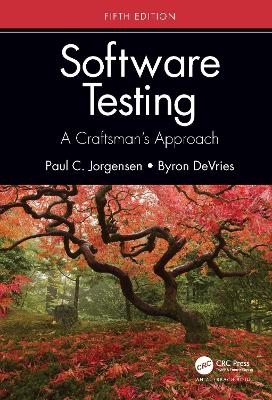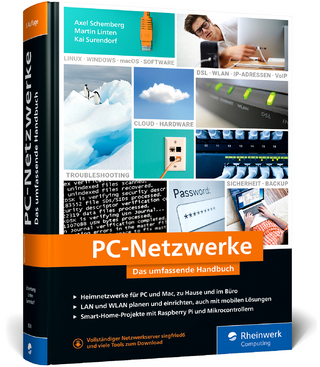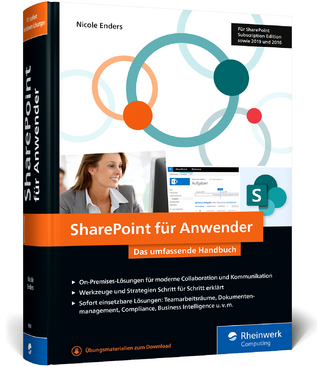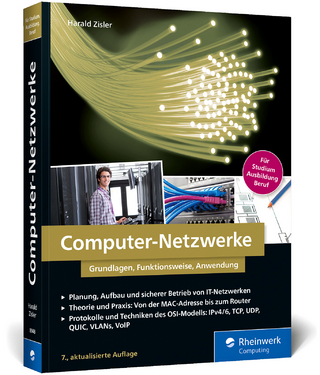
Software Testing
CRC Press (Verlag)
978-0-367-35849-5 (ISBN)
This updated and reorganized Fifth edition of Software Testing: A Craftsman's Approach continues to be a valuable reference for software testers, developers, and engineers, by applying the strong mathematics content of previous editions to a coherent treatment of software testing.
Responding to instructor and student survey input, the authors have streamlined chapters and examples. The Fifth Edition:
Has a new chapter on feature interaction testing that explores the feature interaction problem and explains how to reduce tests
Uses Java instead of pseudo-code for all examples including structured and object-oriented ones
Presents model-based development and provides an explanation of how to conduct testing within model-based development environments
Explains testing in waterfall, iterative, and agile software development projects
Explores test-driven development, reexamines all-pairs testing, and explains the four contexts of software testing
Thoroughly revised and updated, Software Testing: A Craftsman’s Approach, Fifth Edition is sure to become a standard reference for those who need to stay up to date with evolving technologies in software testing.
Paul C. Jorgensen, Ph.D., spent 20 years of his first career developing, supporting, and testing telephone switching systems. Since 1986, he has been teaching graduate courses in software engineering, first at Arizona State University, and then at Grand Valley State University. As of August 2017, he became a Professor Emeritus of Computer Science at Grand Valley State University. He claims he is not retired, he just has a 7-day weekend, every week. Paul is a co-author of two McGraw-Hill books (1970 and 1992). In addition to his software testing book, he is the author of two other CRC Press books: Modeling Software Behavior-A Craftsman’s Approach and The Craft of Model-Based Testing. He has reactivated his consulting practice, Software Paradigms, working with companies in Europe and North America. Byron DeVries, Ph.D., currently teaches graduate and undergraduate courses in software engineering at Grand Valley State University. Previously, he directed the testing of flight-worthy avionics software during his 12-year career in the aviation systems industry. His research interests are the in the modeling and verification of high-assurance adaptive cyber-physical systems.
Part I. A Mathematical Context. Chapter 1. A Perspective on Testing. Chapter 2. Examples. Chapter 3. Discrete Math for Testers. Chapter 4. Graph Theory for Testers. Part II. Unit Testing. Chapter 5. Boundary Value Testing. Chapter 6. Equivalence Class Testing. Chapter 7. Decision Table-Based Testing. Chapter 8. Code-Based Testing. Chapter 9 Testing Object-Oriented Software. Chapter 10. Retrospective on Unit Testing. Part III. Beyond Unit Testing. Chapter 11. Life Cycle-Based Testing. Chapter 12. Integration Testing. Chapter 13. System Testing. Chapter 14. Model-Based Testing. Chapter 15. Software Complexity. Chapter 16. Testing Systems of Systems. Chapter 17. Feature Interaction Testing. Chapter 18. Case Study: Testing Event-Driven Systems. Chapter 19. A Closer Look at All Pairs Testing. Chapter 20. Software Technical Reviews. Chapter 21. Epilogue: Software Testing Excellence.
| Erscheinungsdatum | 30.06.2021 |
|---|---|
| Zusatzinfo | 178 Tables, black and white; 187 Line drawings, black and white; 187 Illustrations, black and white |
| Verlagsort | London |
| Sprache | englisch |
| Maße | 178 x 254 mm |
| Gewicht | 1143 g |
| Themenwelt | Mathematik / Informatik ► Informatik ► Netzwerke |
| Mathematik / Informatik ► Informatik ► Programmiersprachen / -werkzeuge | |
| Mathematik / Informatik ► Informatik ► Software Entwicklung | |
| ISBN-10 | 0-367-35849-2 / 0367358492 |
| ISBN-13 | 978-0-367-35849-5 / 9780367358495 |
| Zustand | Neuware |
| Informationen gemäß Produktsicherheitsverordnung (GPSR) | |
| Haben Sie eine Frage zum Produkt? |
aus dem Bereich


